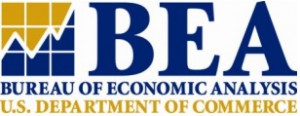 November’s Producer Price Index rose 0.4 percent. However, prices for most health goods and services grew slowly, if at all. Nine of the 16 price indices for health goods and services grew slower than their benchmarks.*
November’s Producer Price Index rose 0.4 percent. However, prices for most health goods and services grew slowly, if at all. Nine of the 16 price indices for health goods and services grew slower than their benchmarks.*
The major exceptions were prices for pharmaceutical preparations, which increased 0.4 percentage points more than prices for final demand goods less food and energy; and nursing homes, for which prices increased 0.3 percentage points more than prices for final demand services less trade, transportation, and warehousing.
Prices of health goods for intermediate demand, were lower than their benchmark. Perhaps slow price increases for medicinal and botanical chemicals, and biological products will flow through to prices of pharmaceutical preparations but that has not previously been the case.
Over the last twelve months, prices of nine of the 16 health goods and services have increased slower than their benchmarks. Three stand out as having increased significantly more than their benchmarks: Pharmaceutical preparations (7.0 percentage points), biological products (1.8 percentage points), and dental care (1.7 percentage points).**
(See Table I below the fold.)
Read More » »
 I recently attended a roundtable discussion that included Human Resource (HR) executives, chief financial officers (CFOs), benefits brokers, consultants and providers who discussed ways self-insured employer plans can lower their health care costs. The meeting was hosted by a state-of-the-art hospital that is part of a small chain of medical facilities, including emergency rooms, imagine, clinics, orthopedic hospitals.
I recently attended a roundtable discussion that included Human Resource (HR) executives, chief financial officers (CFOs), benefits brokers, consultants and providers who discussed ways self-insured employer plans can lower their health care costs. The meeting was hosted by a state-of-the-art hospital that is part of a small chain of medical facilities, including emergency rooms, imagine, clinics, orthopedic hospitals.





